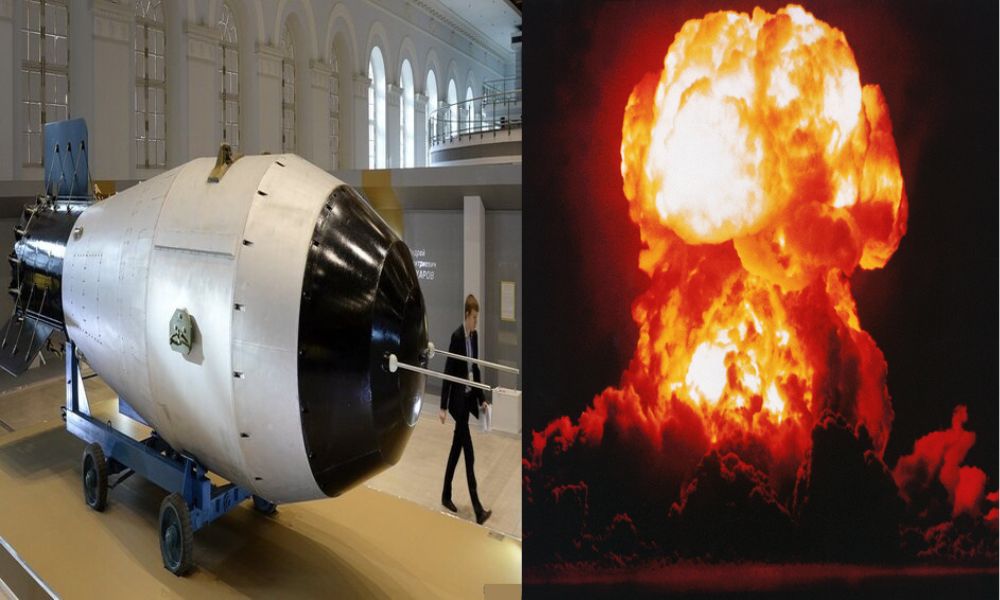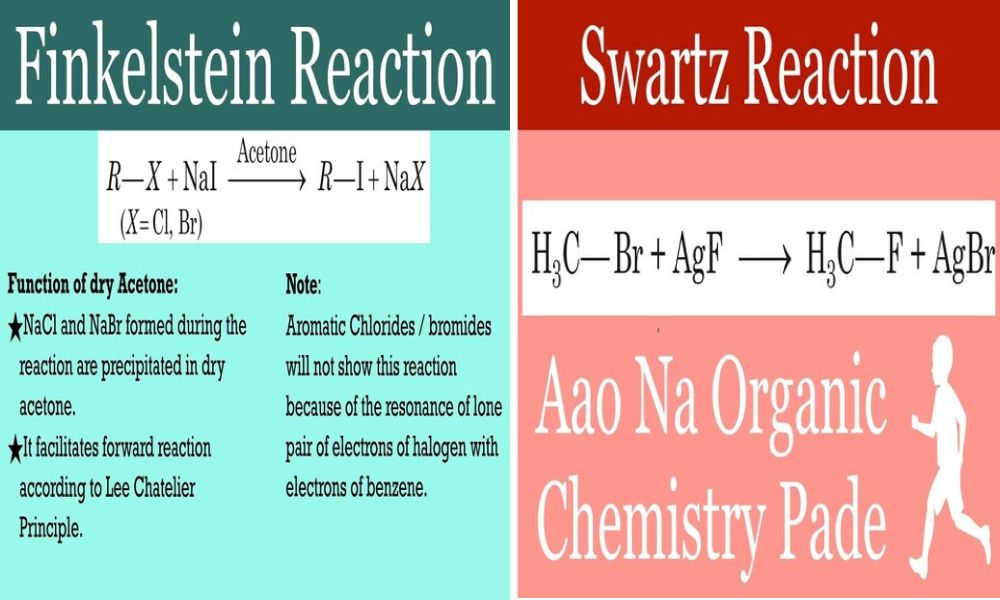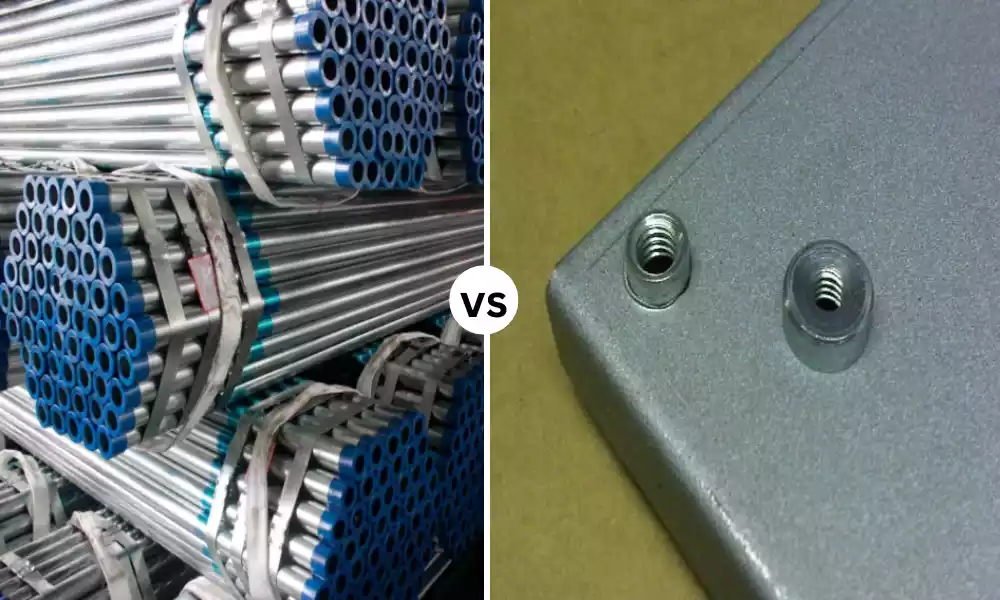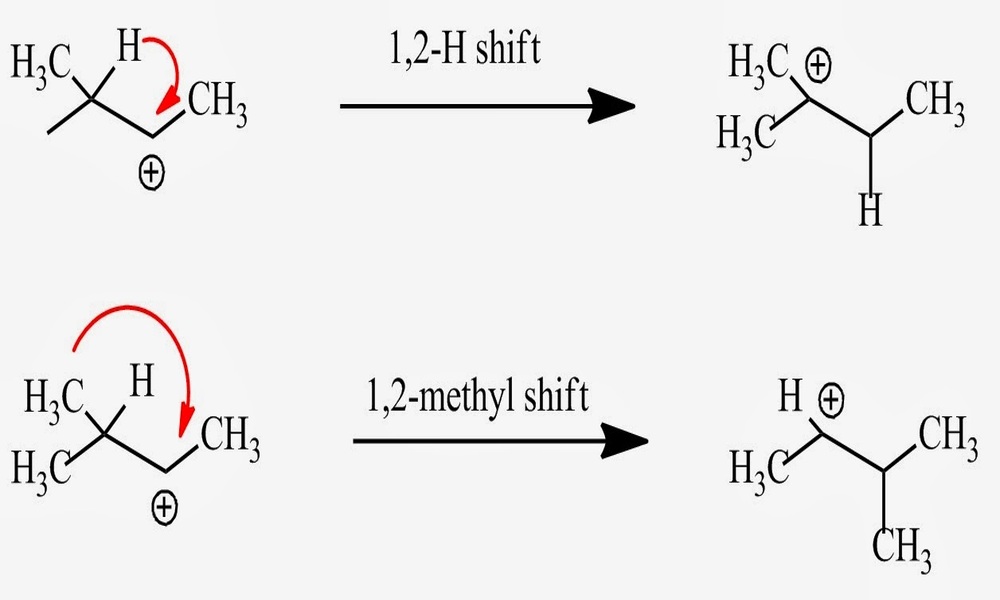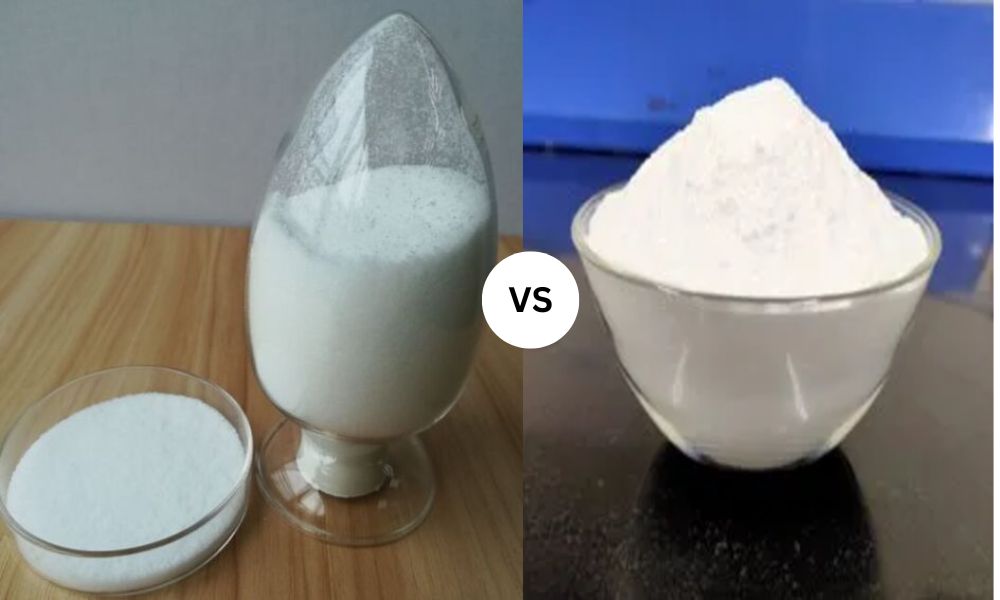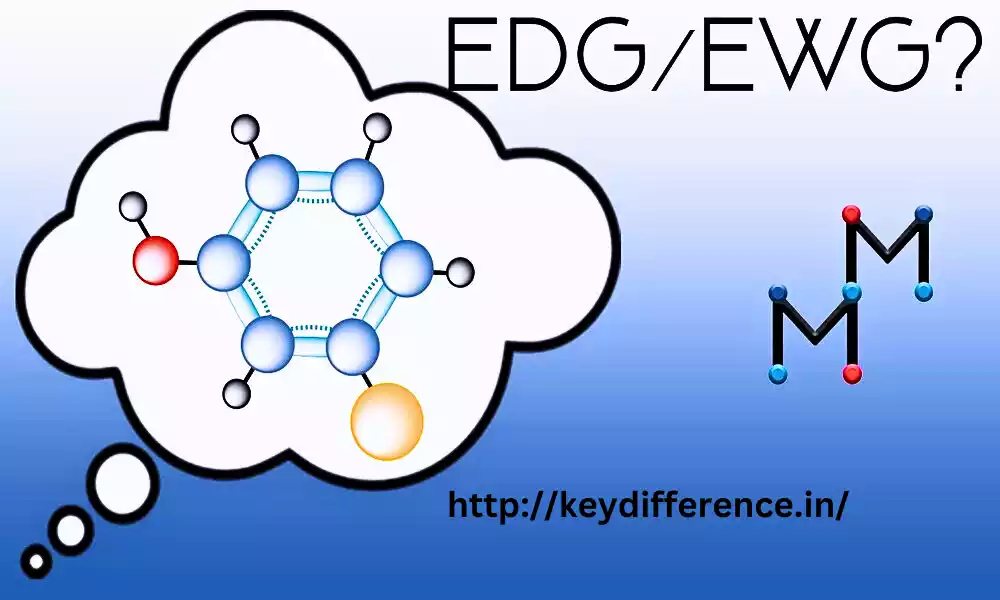Nuclear weapons have always been a source of both excitement and anxiety since the time of their introduction around the middle of the 20th century. Two main types of nuclear explosives changed the course of time Hydrogen and Atomic Bombs. Although both are extremely destructive they differ fundamentally in ways, ranging from their basic concepts to the explosive force.
We will explore the differences between atomic bombs and hydrogen by shedding some light on the science of their history, the consequences, and the impact of these weapons. Understanding these distinctions isn’t just a matter of historical importance, but is also essential for the promotion of peace and security across the globe.
What is a Hydrogen Bomb?
Hydrogen bombs (sometimes referred to as thermonuclear bombs or H-bombs ) are nuclear weapons fueled by nuclear fusion reactions for explosive power, making them much more potent than their fission counterparts.
The hydrogen bomb operates using thermonuclear fusion, the same process that powers our sun. Energy for such devices typically comes from fission reactions initiated by conventional atomic bombs called triggers; their energy then creates conditions necessary for isotopes of hydrogen to fuse together (usually deuterium and tritium).
Fusion involves joining light atomic nuclei together to form heavier nuclei and release massive amounts of energy in the form of heat and light, producing hydrogen bombs with explosive power several orders of magnitude greater than their fission counterparts.
Their yield, or amount of energy released upon detonation, is usually measured in TNT equivalent kilotons or megatons of yield energy released.
Hydrogen bomb development requires advanced technological capabilities and expert knowledge, prompting concern about global security, arms control, and potential catastrophic consequences in warfare.
Note that this information provides only an introduction, and further knowledge and expertise are required in order to fully grasp all technical aspects of hydrogen bomb technology.
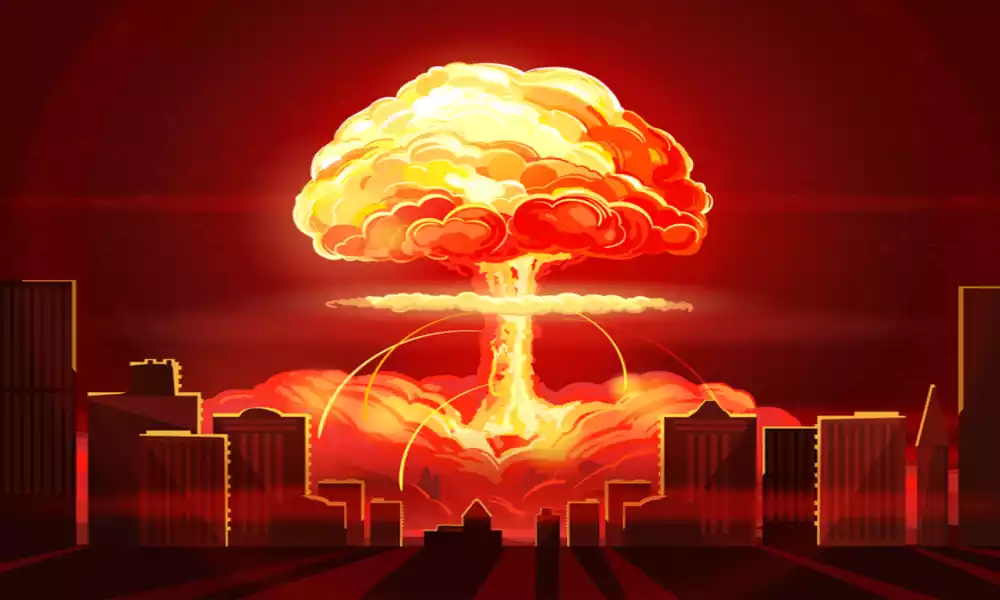
What is an Atomic Bomb?
An atomic bomb, Commonly referred to as an A-bomb, is a type of explosive device powered by fission Reactions caused by nuclear fission Reactions. It was one of the Earliest types of nuclear weapons ever created for use in warfare. An atomic bomb works on the Principle of nuclear fission, or the splitting of atomic nuclei into smaller Fragments.
Bombs Typically contain a critical mass of fissile material like enriched Uranium-235 or plutonium-239 that, when brought together in sufficient amounts, initiates an Explosive chain reaction that quickly releases energy in an Explosion.
Fission begins when a Neutron collides with the nucleus of a Fissile atom, causing its core to become Unstable and split apart into smaller nuclei, Releasing additional neutrons as well as Energy. These newly liberated neutrons then have the potential to collide with more fissile atoms and trigger chain reactions that rapidly escalate energy release.
An atomic bomb’s Explosive power is measured in terms of its yield, which represents the amount of energy released in its Detonation – usually expressed as either kilotons or Megatons of TNT equivalent.
Atomic bombs have devastating consequences when detonated, including intense blast waves, heat radiation, ionizing radiation exposure, casualties, and long-term health consequences that result in major destruction to structures, casualties, and lasting health impacts for communities surrounding bomb sites.
World War II saw the use of Atomic bombs on Hiroshima and Nagasaki as evidence of their Devastating power and immense Humanitarian Consequences of nuclear weapons. Since then, their Development and use have raised serious ethical, moral, geopolitical, and Disarmament considerations leading to efforts for nonproliferation, arms control, and disarmament efforts.
Note that this information provides only an outline and that additional knowledge and expertise is required in order to fully grasp all aspects of atomic bomb technology.

Why is a hydrogen bomb stronger than an atomic bomb?
Hydrogen bombs are stronger than their atomic counterparts because they take advantage of nuclear fusion – an unconventional but more potent process to release energy that increases its yield and explosive force.
Here are several reasons why Hydrogen bombs are stronger:
Energy Sources: Hydrogen bombs draw energy from both Nuclear fusion and fission reactions, whereas an atomic bomb relies solely on fission Reactions for power. Nuclear fusion Involves light nuclei of Hydrogen colliding together into Heavier nuclei to release Significant amounts of energy – far more so than fission reactions used in atomic bombs.
Power of Fusion: Nuclear fusion releases vastly more energy than fission, often yielding millions of times more than fission reactions and producing far more powerful explosions.
Fuel for Hydrogen Bombs: Hydrogen bombs utilize Isotopes of hydrogens such as Deuterium and tritium as their source of power, Making these isotopes easier and more readily accessible compared with fissile Materials like uranium-235 or plutonium-239 used by nuclear bombs. Accessibility also contributes to larger and more destructive hydrogen bombs being built.
Chain Reaction: In an atomic bomb, chain reactions are sustained through successive fission reactions triggered by each fission reaction; with hydrogen bombs using additional steps involving fusion reactions for even stronger detonations.
Hydrogen Bombs Use Multiple Stages or Components: Hydrogen bombs consist of several stages or components to enable the sequential release of energy.
An initial atomic bomb acts as an initiating event to generate high temperatures and pressures required for fusion to take place, while this multi-stage design allows for the controlled release of vast amounts of energy that contributes to increasing the strength of hydrogen bombs.
The hydrogen bomb’s combination of nuclear fusion, higher energy output, multiple fuel sources, and multi-stage design makes it significantly stronger than its atomic counterpart in terms of explosive power and destruction capabilities.
Difference Between Hydrogen and Atomic Bomb
Sure! Here’s a comparison table highlighting the key differences between hydrogen bombs and atomic bombs:
| Aspect | Hydrogen Bomb | Atomic Bomb |
|---|---|---|
| Reaction Type | Fusion reactions | Fission reactions |
| Fuel | Deuterium and Tritium isotopes | Uranium-235 or Plutonium-239 |
| Explosive Power | Much more powerful | Less powerful |
| Energy Source | Fission reaction trigger | Fission chain reaction |
| Destructive Capability | Enormous | Significant |
| Historical Examples | Castle Bravo, Tsar Bomba | Little Boy (Hiroshima), Fat Man (Nagasaki) |
| Construction | More complex and advanced | Comparatively simpler |
| Size and Weight | Larger and heavier | Relatively smaller and lighter |
| International Concerns | Proliferation and arms control | Proliferation and arms control |
| Environmental Impact | Radioactive fallout and long-term consequences | Radioactive fallout and long-term consequences |
Please note that the table provides a general overview, and there may be additional nuanced differences beyond what is listed here.
Atomic Bomb-Truman Press Release-August 6, 1945
I can provide you with a basic overview of President Truman’s press release regarding the atomic bomb dropped on August 6, 1945. On August 6, 1945, President Harry S. Truman issued a press release detailing the use of an atomic bomb on Hiroshima, Japan, emphasizing its purpose and necessity in ending World War II.
Truman’s statement likely underscored the devastating power and potential loss of life from an atomic bomb, as well as how scientific advancement made its creation possible and highlighted its significance as a new weapon of warfare. Truman could also address alternative approaches being considered, including continued conventional bombing or invasion of Japan – both of which would likely incur heavy casualties on both sides.
Truman’s press release likely also expressed sadness for the civilian lives lost at Hiroshima while stressing its aim of saving more lives by hastening Japan’s surrender and ending the war faster. Please refer to historical sources for accurate details regarding President Truman’s press release dated August 6, 1945.
Debate over the Japanese Surrender
The issue of Japan’s surrender during World War II has long been debated among historians, scholars, and policymakers. At its core lies the question of whether using nuclear bombs on Hiroshima and Nagasaki was necessary to prompt its surrender or other factors were more influential. Regarding the Japanese surrender controversy, there are different points of view.
Supporters of Atomic Bombs:
Advocates for this argument maintain that nuclear weapons were essential in forcing Japan to surrender. According to them, bombings demonstrated their overwhelming destructive potential, convincing Japan’s military leadership of the futility of continuing with war and making concessions easier. Furthermore, conventional bombing campaigns or land invasions would likely have resulted in even higher casualties for both sides involved.
Alternative Factors:
Some scholars maintain that factors other than atomic bombings were more influential in Japan’s decision to surrender. They suggest that both military and civilian leadership already recognized their untenable situation due to factors like Soviet entry, the worsening economy and logistical conditions, and the success of Allied island-hopping campaigns in the Pacific; according to this view, bombings may have hastened surrender but were not sole or decisive factors in it.
Moral and Ethical Considerations:
Another component of this debate focuses on the moral and ethical repercussions of the bombings. Critics maintain that dropping an atomic bomb on civilian populations was unnecessary and excessive – leading to unwarranted civilian deaths – given Japan had already surrendered, alternative options (such as demonstration of its power or targeted military strikes ) should have been explored in its place.
Note that the debate surrounding Japan’s surrender is ongoing, leading to various perspectives and interpretations. Analyzing historical sources and accessing primary materials are vital in understanding all of the factors that impacted their decision to surrender as well as their participation in that decision-making process – such as nuclear bombings.
Father of the Atomic Bomb” Was Blacklisted for Opposing H-Bomb
“Father of the Atomic Bomb,” or J. Robert Oppenheimer, is widely recognized for his contributions to developing an atomic bomb during World War II’s Manhattan Project – particularly through opposing hydrogen bomb development. However, claims that Oppenheimer was blacklisted due to opposing hydrogen bomb development require clarification.
After World War II, Oppenheimer became an influential figure in shaping U.S. nuclear policy. He expressed reservations over the development and deployment of more powerful hydrogen bombs (thermonuclear bombs) which depend on fusion reactions for their destruction; these bombs worried Oppenheimer due to their destructive potential and potential arms race escalation.
Oppenheimer found Himself at the center of heightened anti-Communist sentiment in 1954 during the McCarthy Era, leading him to undergo a security Clearance hearing Conducted by the Atomic Energy Commission (AEC) which sought to determine whether or not his security clearance should be revoked. At this hearing, Oppenheimer’s opposition to hydrogen bombs and his previous leftist associations came under scrutiny.
Although he wasn’t blacklisted or officially labeled a security risk, his security clearance was suspended limiting his involvement with nuclear-related matters; this decision caused significant debate within the scientific community and the public at large. President Lyndon B. Johnson presented Oppenheimer with the Enrico Fermi Award in 1963 to recognize his Contributions to science and National Security.
However, Oppenheimer’s security Clearance was later Suspended following intense public pressure; Nonetheless, he remains one of the most revered Scientists of his time. Note that “blacklisting” may take on different meanings for different individuals; while Oppenheimer was subject to consequences due to his views on hydrogen bombs, he wasn’t subject to formal blacklisting like some individuals were during McCarthyism.
What are the similarities between hydrogen bombs and atomic bombs?
Hydrogen bombs and atomic bombs share some similarities despite their various differences when it comes to nuclear reactions and destructive power.
Here are a few key similarities:
Nuclear Weapons: Both hydrogen bombs and atomic bombs are powerful nuclear weapons that harness the energy released through nuclear reactions to cause a massive explosion.
Harnessing Atomic Nuclei: Both types of bombs use the properties of atomic nuclei to unleash massive amounts of energy, with hydrogen bombs using nuclear fusion reactions while atomic bombs depend on nuclear fission reactions for release.
Massive Energy Release: Both Hydrogen bombs and atomic bombs release an Immense amount of energy upon Detonation, in the form of an explosion which produces Shockwaves, heat waves, radiation rays, etc.
Weapons of Mass Destruction (WMDs): Both types of bombs can be Considered weapons of mass Destruction (WMDs), given their capacity for Widespread devastation, Casualties, and long-term Environmental and health impacts.
Technical Complexity: Both hydrogen bombs and atomic bombs are highly complex weapons that require advanced scientific and engineering knowledge for design, production, and handling. Both involve advanced technology as well as in-depth knowledge of nuclear physics.
International Security Concerns: Both types of bombs pose grave international security concerns. Proliferation of nuclear weapons such as hydrogen and atomic bombs has become a global security threat, prompting efforts toward arms control, non-proliferation, and disarmament to mitigate their risks.
Atomic bombs and hydrogen bombs share many similarities; however, it’s essential to recognize their differences regarding nuclear reactions involved and power levels as these make each weapon distinct in terms of destructive capability.
International treaties and efforts for disarmament
International treaties and initiatives related to disarmament have proven invaluable in combatting the proliferation and potential dangers posed by hydrogen bombs, atomic bombs, and other nuclear weapons.
Below are a few notable international agreements and initiatives related to disarmament:
Treaty on the Non-Proliferation of Nuclear Weapons (NPT): Entered into force in 1970, this treaty seeks to prevent nuclear proliferation by disarming and encouraging peaceful use of nuclear energy. Almost all countries have signed it; five recognized nuclear-weapon states including the United States, Russia, China France, and the UK as well as non-nuclear-weapon states have also pledged their adherence.
Strategic Arms Reduction Treaties (START): The Strategic Arms Reduction Treaties (START) are bilateral Agreements signed between the US and Russia in 1991 to limit and reduce strategic Nuclear weapons Arsenals. Their successor treaty known as New START came into force in 2010 as the original START expired.
Comprehensive Nuclear-Test-Ban Treaty (CTBT): Adopted by the UN in 1996, this treaty prohibits all forms of nuclear testing including hydrogen bombs and atomic bombs. Although not yet in force due to some countries not ratifying it, the treaty has played an essential role in curbing global nuclear testing.
Treaty of Tlatelolco: Signed in 1967, the Treaty of Tlatelolco established a nuclear-weapon-free zone in Latin America and the Caribbean by prohibiting any testing, use, production, acquisition, or possession of nuclear weapons within this region.
Nuclear-Weapon-Free Zones: Numerous regional treaties have established nuclear-weapon-free zones, including the Treaties of Rarotonga in the South Pacific; Bangkok in Southeast Asia, and Pelindaba, Africa as a whole.
Conference on Disarmament (CD): The CD is an international multilateral forum based out of Geneva, Switzerland where member states negotiate disarmament issues among themselves. While not achieving an all-encompassing disarmament treaty agreement yet, its work has played a vital role in encouraging dialogue and negotiations on disarmament-related matters.
Treaties and efforts for disarmament seek to limit nuclear weapons proliferation, increase transparency, decrease stockpiles, and create a more secure and peaceful world. Yet disarmament presents its own set of challenges; ongoing efforts must continue in order to meet nuclear disarmament goals.
Need for responsible use and handling of nuclear technology
Due to the immense power and potential risks associated with nuclear technology, its safe use and management must be treated as of paramount importance.
Here are a few key reasons that illustrate why responsible practices must be put in place:
Non-Proliferation and Security: Appropriate use and handling of nuclear technology helps stop its proliferation into weapons of mass destruction.
Strict safeguards, monitoring, and international cooperation must be established to ensure that materials used to produce nuclear technology do not fall into criminal hands and are used illegally; robust security measures must also be put in place in order to avoid theft, unauthorized access, or sabotage to nuclear facilities or materials.
Safety and Accidents: Nuclear accidents have the potential to have catastrophic repercussions for human lives, the environment, and public health. Responsible practices require stringent safety protocols, comprehensive risk analyses, and effective emergency response plans in place in order to lower the likelihood of accidents while mitigating their effects. Strict compliance with safety measures during operation, maintenance, disposal, or use is crucial in keeping nuclear materials and waste secure.
Environmental Protection: Nuclear technology – both weapons and energy production – has the potential to cause extensive environmental harm. Responsible handling should include limiting radioactive release into the environment, managing nuclear waste properly, and creating sustainable decommissioning practices for nuclear facilities. Efforts should be made to mitigate its adverse impacts as well as transition towards cleaner and more sustainable forms of energy generation.
International Cooperation: Responsible use of nuclear technology requires international collaboration and coordination. Sharing best practices, exchanging information, and increasing transparency among nations can improve safety, security, and the peaceful use of nuclear technology. International organizations like the International Atomic Energy Agency (IAEA) play an essential role in facilitating cooperation and setting standards for responsible nuclear practices.
Public Health and Perception: Adopting responsible practices when handling nuclear technology involves considering potential health risks to workers, nearby communities, and the general public. Accurate information delivery, responding to concerns raised by stakeholders, and including them in decision-making processes is essential in building trust, guaranteeing public safety, and cultivating responsible attitudes about nuclear technology.
Peaceful Applications of Nuclear Technology: Nuclear technology has many peaceful uses, such as electricity generation, medical diagnosis and treatment, agriculture, and scientific research. Responsible practices must be observed when applying this technology in such applications to ensure safe performance with minimal risks to both people and the environment.
Promoting responsible use and handling of nuclear technology requires international agreements, strict regulations, effective oversight, and an ongoing commitment from governments, industry, and scientific communities. By prioritizing safety, security, and environmental considerations in our approach to nuclear technology we can maximize its advantages while mitigating any associated risks.
Encouragement for further research and education on nuclear weapons
Nuclear weapon research and education is vital for many reasons, with key considerations as follows:
Understand Their Historical Import: Studying nuclear weapons provides us with insights into important historical events and their ramifications on world affairs. Analyzing their development, use, and consequences enables us to grasp both past conflicts’ severity as well as efforts being taken against their recurrence.
Promoting Arms Control and Disarmament: Through research and education on nuclear weapons, scholars and policymakers can develop effective arms control and disarmament measures. By understanding their technical features, geopolitical dynamics, ethical considerations, and potential sources of proliferation they can formulate effective strategies to both stop their proliferation as well as support disarmament efforts.
Assessing Security Risks: Thorough research on nuclear weapons deepens our understanding of their associated security risks. It allows for analysis of potential threats posed by proliferation, nuclear terrorism, accidental detonations, or non-state actors using weapons; providing policymakers with the insight necessary for creating robust security measures and strengthening antiproliferation efforts.
Informing Non-Proliferation Efforts: Informing individuals about nuclear weapons fosters a sense of responsibility and awareness regarding non-proliferation efforts. Education allows individuals to participate actively in public discourse, advocate for diplomatic solutions, and support international treaties aimed at curbing nuclear weapon proliferation.
Renovating Technology and Policy: Research into nuclear weapons has the ability to propel technological and policy innovations.By exploring areas like nuclear physics, materials science, international law, and the development of safer nuclear technologies as well as improving detection methods. Researchers can work towards creating better policies to counter nuclear threats effectively.
Fostering Dialogue and Understanding: Education about nuclear weapons fosters open dialogue and understanding between individuals, communities, and nations. It offers constructive discussions regarding risks and challenges related to nuclear weapons while encouraging diplomatic solutions that advance disarmament and non-proliferation efforts worldwide.
By encouraging research and education on nuclear weapons, we can gain a better understanding of their complexities, strengthen global security efforts, and work toward creating a world without nuclear devastation. Knowledge, awareness, and informed decision-making can collectively bring us one step closer to creating a safer and more peaceful future for ourselves all.
Conclusion
Hydrogen bombs and atomic bombs are powerful and destructive weapons that have had a lasting impact on history, geopolitics, and global security. Hydrogen bombs may be more destructive due to using nuclear fusion, but both types possess enormous destructive potential.
The historical and geopolitical significance of nuclear weapons cannot be overstated. They played a pivotal role in World War II, the Cold War, and subsequent arms races as they helped shape international relations and strategic considerations. Hiroshima and Nagasaki provided poignant illustrations of nuclear weapon’s devastating consequences, prompting ethical and moral discussions regarding their usage.

